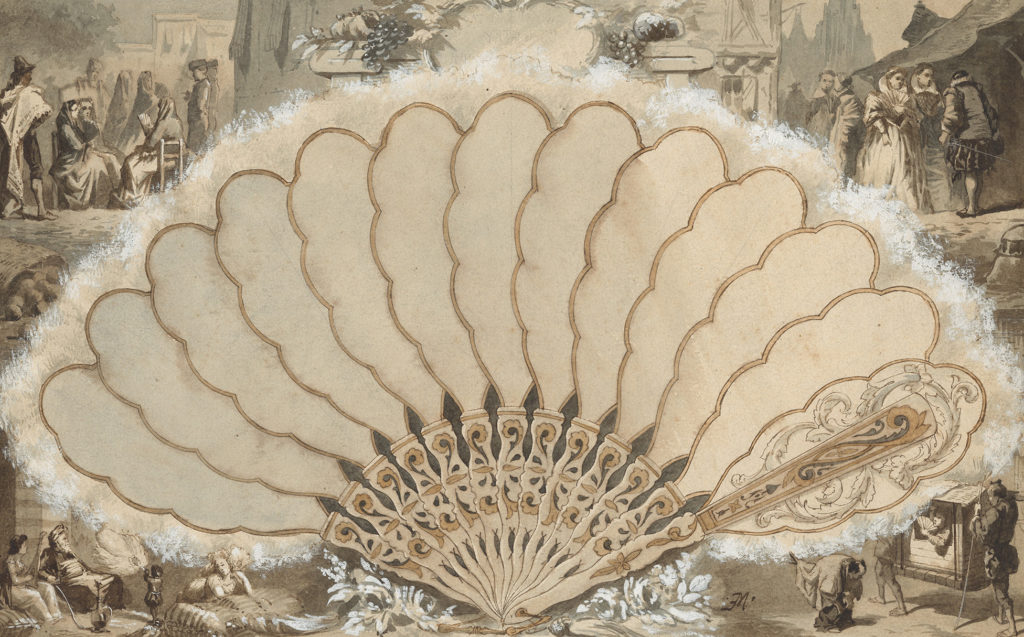In four different scenes, people of all conditions are united around one object: the fan, central point of the composition. We see a gathering on a Spanish square on a hot afternoon, a stroll through the market, a venture in an Asian sedan chair, or a reclination in an Oriental harem. Beyond its primary use, fans quickly became, through the 19th century, a highly decorative and desired object amongst the higher classes. The decorum drawn or printed on the fan got great importance. On the opposite, Ernest Meissonier here gave all the emphasis to a large and sublime but empty fan, and put the illustrations, although significant, into the four corners.
The present sheet is a very rare and early work by Meissonier, when he was, in his twenty’s, acting as a painter of fans and of religious images for the publishers of the Rue Saint-Jacques in Paris. At the time, he had already participated at the Salon of 1834 with the Bourgeois flamands, now at the Wallace Collection, London. After having spent only four months with his teacher Léon Cogniet in 1832, Meissonier was attracted by the adventures of travelling and went to Rome, Switzerland and The Netherlands. He was then already known as a promising and original kind of Romantic artist, dedicated to depict real life and historical reflections of daily life inspired by various periods of time. Quickly, his jewellike genre paintings and his virtuous production of small-scale genre scenes were highly regarded by his upper- middle-class audience. He played here with this genre of study, to actually produce a finished work based on a confrontation of the fan and the surrounding vignettes.
It is worth mentioning the provenance: Gérard Levy, one of the best experts in Romanticism and Symbolism in the 1970-80’s in France. He gathered a large collection of original 19th century fans, with a few studies of fan including the present sheet.






